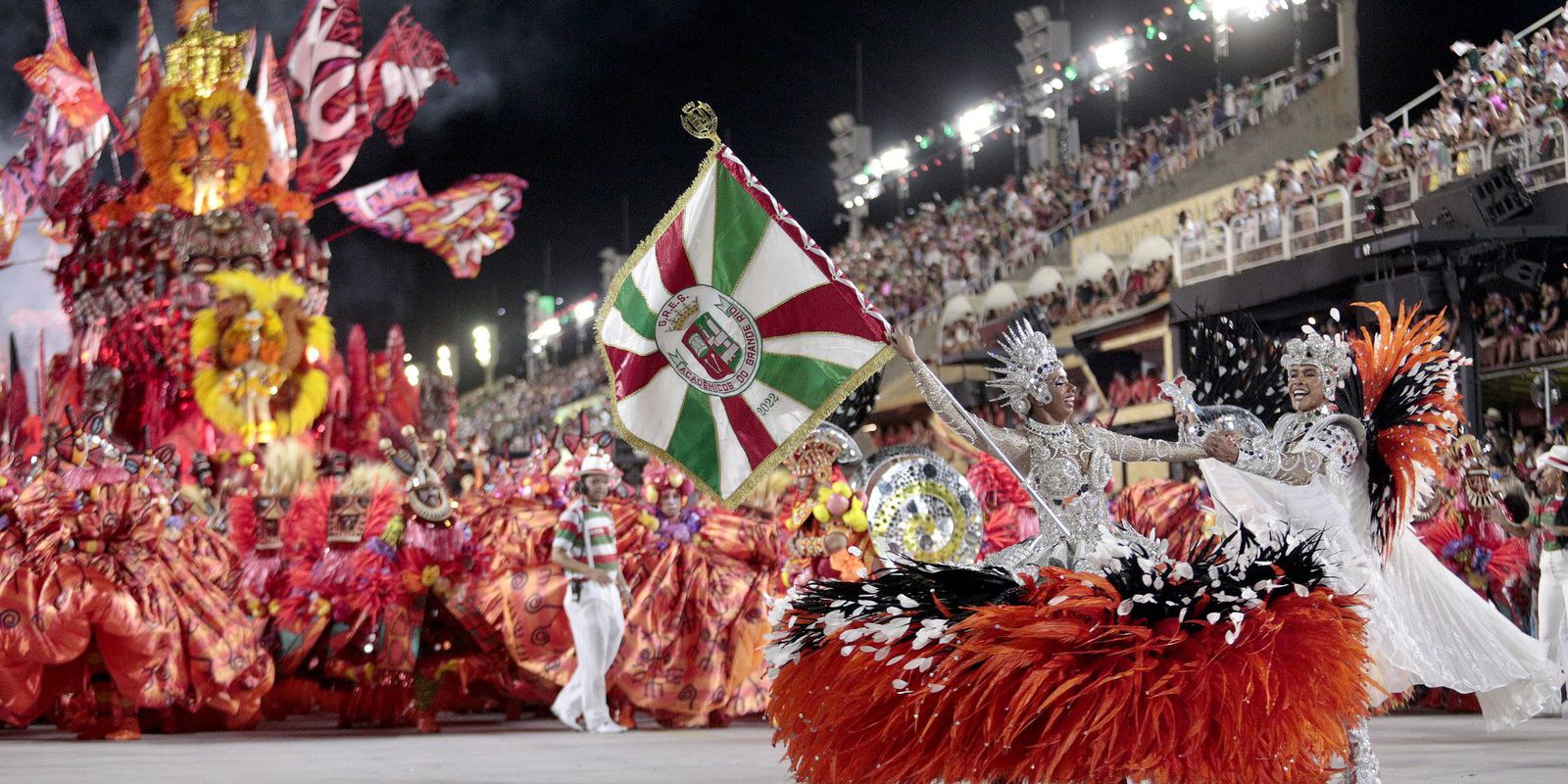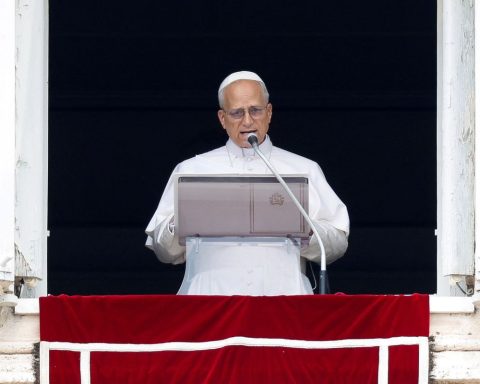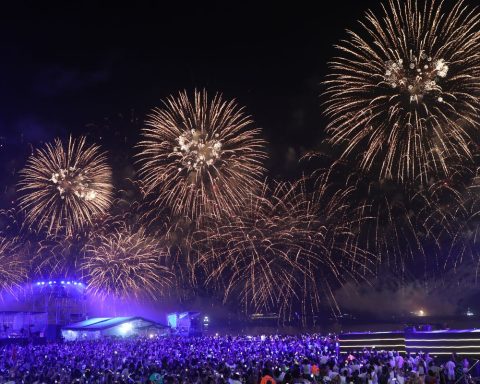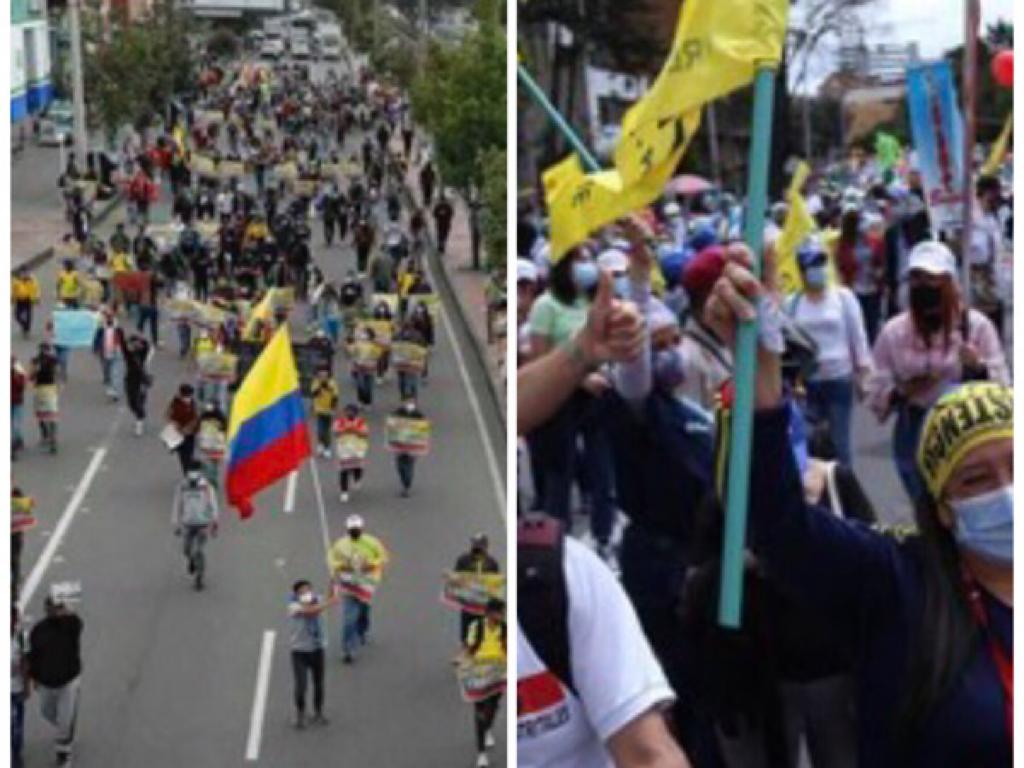Without the pressure of the judges, the six samba schools of the Grupo Especial that were best placed in this year’s parade in Rio de Janeiro returned to occupy the Marquês de Sapucaí, in a festive atmosphere. The Champions Parade started around 9:30 pm and continued until early in the morning of today (1st) at 5:30 am.
THE Saturday, in Rio, was cloudy and rainy in some regions and the city entered the attention stage, the third of five operational stages. But, at night, the rain stopped and did not disturb the samba schools.
In the Champions’ Parade, the order is reversed to that of placement, so Salgueiro opened the night, which came in sixth, followed by Portela, Unidos from Vila Isabel, Unidos do Viradouro, Beija-Flor from Nilópolis and, for Finally, the 2022 champion, Acadêmicos do Grande Rio, entered the avenue.
parades
Salgueiro defended the plot Resistance, showing that the word defines the history of the black population in Rio of January. with the condition that to have being the first school to introduce the African theme in the parades, Salgueiro once again took to the avenue the religious culture, the traditions of celebrations, capoeira circles and dances such as jongo, without forgetting to criticize the racism that still exists in full year 2022.
Portela also took themes from black culture to the Sambadrome for the parades. With the plot Igi Osè Baobá, the school showed that the sacred tree that bears witness to time symbolizes the connection with the ancestry of the African people, the pillar that unites heaven and earth, the link between the living and the dead. The samba-enredo excited the members, and the baobá was present in several sectors of the blue and white of Oswaldo Cruz and Madureira.
Unidos de Vila Isabel, this year, paid tribute to one of the most important symbols of blue and white in the north, the singer and songwriter Martinho da Vila. The plot is Sing, Sing, My People! The Villa belongs to Martin!
Champion of 2020, Viradouro was in third place this year. The red and white of Niterói chose the plot Não Há Tristeza que Possa Support So Much Alegria to revive the Carnival of 1919, which occurred after another pandemic, that of the Spanish flu. Irreverent costumes and luxurious allegories recalled the carnival of that time. There was not even the tram that was used in the parades at the time.
With the plot Empretecer o Pensamento É Ouvir a Voz da Beija-Flor, the runner-up of this year’s carnival in Rio of January paid tribute to black writers of recognition in Brazil and internationally. Nilópolis’ blue and white also highlighted the religiosity, culture and struggle of black people in the history of the country and the school itself.
The closing of the night was the champion. The conquest of the first title in the Special Group, after hitting the beam for four years, was cause for much celebration for Grande Rio. With the story Fala, Majeté! Sete Chaves de Exu, the school criticized religious intolerance with homage to the orixá of religions of African origin. The school wanted to overturn a wrong view of the divinity, seen by some as a promoter of evil, to show that, in fact, Exu opens paths and is the guardian of other orixás.
postponed carnival
The parades were held this year out of time after the postponement due to the covid-19 pandemic. In 2021, the carnival was completely canceled. Now, schools were able to return to the avenue.


















